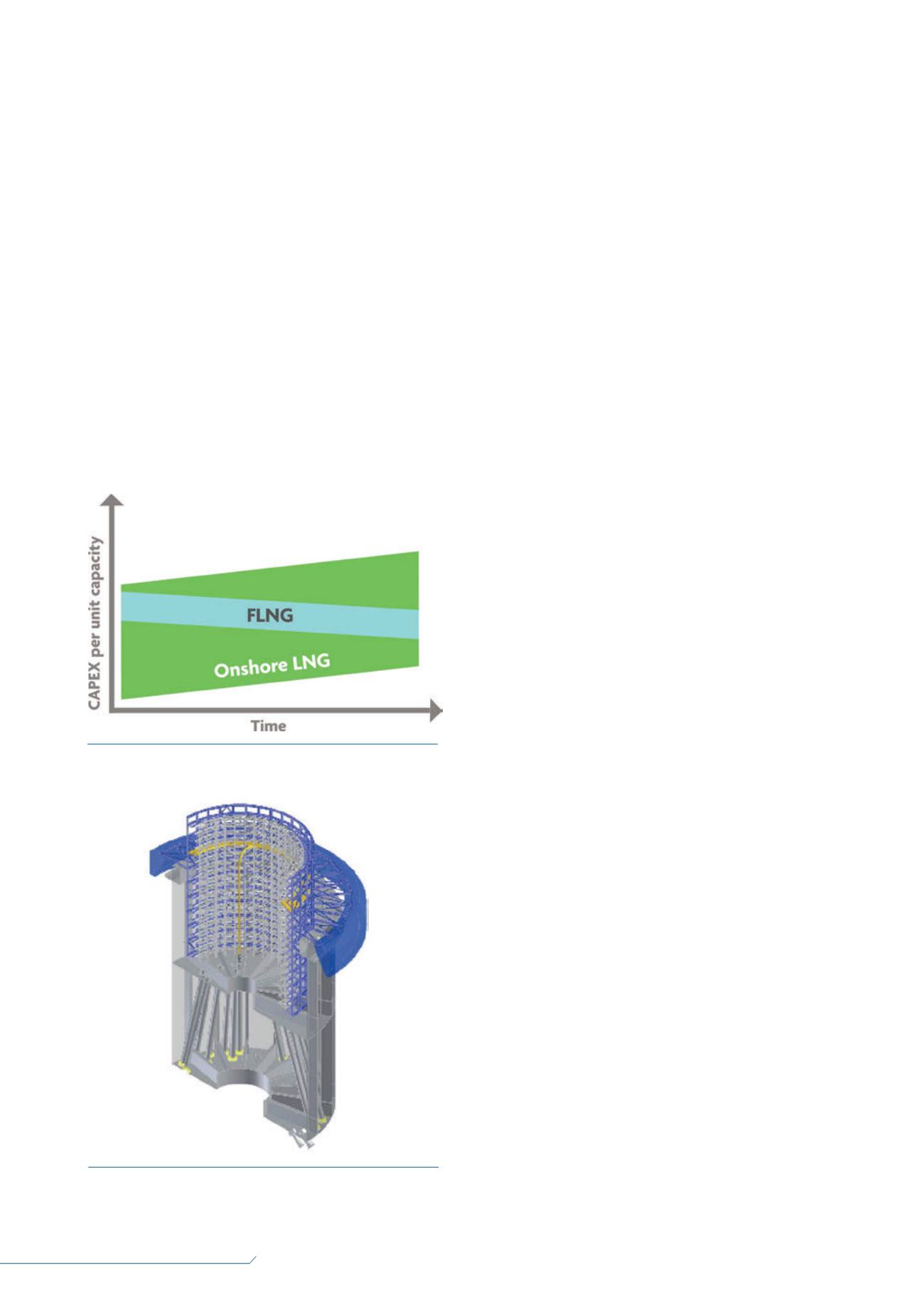
26
LNG
INDUSTRY
MARCH
2016
Quickly introducing large increases in capacity and
technology remains problematic for the LNG industry as it must,
at all costs, deliver the LNG product to contracted buyers.
Therefore, repeatability is the first choice means of improving
project economics. Repeat designs mean negligible project risk
in execution and operation, schedule gains through the reuse of
engineering, and the optimisation of the construction sequence.
The founding principle of the long-term (generic) gFLNG Master
Agreement – entered into in 2009 between Shell and the
Technip Samsung Heavy Industries Consortium (TSC) – is to
enjoy repeatability gains with multiple orders over an extended
period. This approach offers a predictable and repeatable
project model that facilitates investment decisions.
The Browse joint venture (JV) has announced its proposal to
develop resources in the Browse Basin, Australia, through an
FLNG concept. This is based on the deployment of three FLNG
facilities. The design of the proposed Browse FLNG facilities will
be predominantly the same as for the Shell
Prelude
FLNG
project, with minor modifications required due to the different
characteristics and water depth at the location of the Browse
reservoirs.
Innovation
FLNG is at an entirely different juncture to the mature area of
onshore LNG. It is new and ripe for further innovation. There is a
clear opportunity for FLNG to have its place among the lowest
cost solutions available to owners of offshore gas reserves,
enabling projects to go ahead while meeting the expectation of
lower delivered LNG prices.
The initial projects went ahead, sometimes using
conservative choices for processes, equipment or layout
whenever reliability or safety could not be guaranteed based on
what was known at the time. The feedback from execution
enables good solutions to be maintained and alternatives to be
found when problems in engineering, procurement or
construction (EPC) have been evidenced. Above all, there is the
possibility of targeting a substantial increase in the output of
LNG and other hydrocarbon products.
Shell has described the Lean FLNG concept, whereby LNG
production is increased from fields that do not benefit from the
coproduction of LPG and hydrocarbon condensate.
1
This trend to larger production rates is further reflected in
the plans announced for the ExxonMobil facility planned for
Scarborough, offshore Australia.
2
The large capacity is justified
by the size and quality of gas reserves.
Production intensification
This implies producing more product from the same offshore
structure. A reasonable target is 8 million tpy of LNG, as this
is effectively proven onshore. Increasing production requires
attention to all areas of the FLNG platform, either to increase
the capacity of each unit, or to free up deck space that can be
used to increase liquefaction capacity.
Feed gas
Bringing substantially more than 1 billion ft
3
/d of wellhead gas
onto a weathervaning floating production facility is a novelty.
One alternative is to spread moor the FLNG facility by designing
for increased deck movement or by adopting heading tolerant
hull designs.
If a turret with weathervaning for heading control is
desirable, then the following solutions can be used:
Mechanical swivel stacks, although there may be some
development needed to improve fluid flow capacity, fluid
pressure and power handling capability.
Technip’s Spiral Swivel Stack (SST) is a solution with a
coiled flexible pipe, offering high capacity and intrinsic
safety through flanged joints with no dynamic seals. Risers,
electrical cables and control lines enjoy an unbroken
connection from the deck to the subsea equipment on the
seabed.
Process technology
Pretreatment
Methods for the intensification of acid gas removal, dehydration
and heavy hydrocarbon removal have all been described, but
can be studied and developed in the new context of FLNG.
Liquefaction
The natural gas liquefaction process best suited to high
capacities offshore is the dual mixed refrigerant (DMR) process.
Figure 3.
Technip’s Spiral Swivel Stack (SST).
Figure 2.
FLNG will be increasingly attractive thanks to scale,
replication and innovation.


